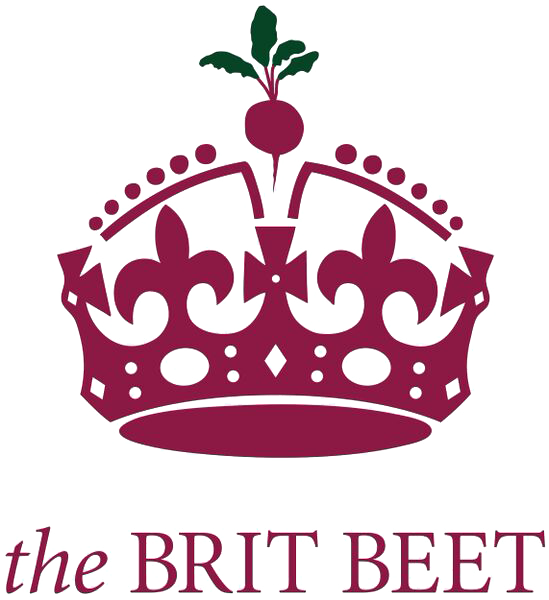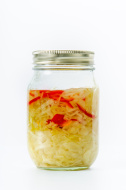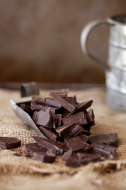For many of us women, hitting the menopause is not exactly the highlight of our lives. We dread the possible onset of common symptoms such as insomnia, hot flushes, sweating, anxiety, impairment of memory(#menopause brain), and feeling tired-out. Some of the longer term consequences aren’t such a thrilling prospect either - a decline in libido (unhappy partner), osteoporosis (there go the skiing trips) heart disease (good god), even dementia (what?) – all linked to a reduction in our estrogen levels.
However, it’s not curtains yet. One of the best ways to fight back is to adapt our diet, helping to alleviate potentially challenging menopausal symptoms.
Foods to Embrace
Bring in these fiber-rich foods
An adequate amount of daily fiber is essential in any diet, but as we head into menopause, we can find ourselves in the ‘Battle of the Bulge’, whilst simultaneously trying not to pull our hair out thanks to fluctuating hormones! So this is where our good friend fiber comes to the rescue. It’s one of the ultimate ways to control our weight as fiber keep us feeling fuller and more satisfied for longer… goodbye tempting fattening snacks. Fibrous foods also keep the bowels moving helping to eliminate any excess estrogens from building up interfering with our natural hormonal balance.
Embrace: Ground flax and chia seeds that are quick and easy fiber foods to add to a smoothie or sprinkle over a smoothie bowl. Add in hearty beans and lentils (great in soups, salads) whole grains (oats, barley, brown rice, millet) and cruciferous veggies, such as broccoli, collage greens, broccoli, cauliflower and cabbage.
BRIT BEET Tip: When increasing fiber in your diet, it's always best to start off slowly whilst increasing your water intake, to allow time for your body to adjust. As a helpful tip, begin with one teaspoon each of ground flax and chia seeds, slowly increasing to 1 tablespoon each OR until ‘smooth banana-like' bowel movements are a delightful daily experience. (Note: Fiber can be damaging when there is a compromised digestive tract, so adjust accordingly or talk to a Certified Nutritional Practitioner.)
Get intimate with foods high in B vitamins
Any change in our lives can bring added stress and for many, going through menopause ranks right up at the top! To make this transition easier on ourselves, we need to eat foods rich in B vitamins that help fortify our nervous systems and keep our energy levels high.
Embrace: Eggs, beans and lentils, leafy green vegetables such as spinach and kale, nuts (almonds and pecans) romaine lettuce, bell peppers, asparagus, crimini mushrooms, chicken, sardines, shrimp and scallops.
Indulge in fats … just the healthy ones!
I know – it sounds counter-intuitive to indulge in foods rich in fats when we’re trying to avoid the ‘muffin top’. However to be clear, we need to focus on the healthy fats like Omega-3’ s and stay clear of the Omega-6 fats (corn, soy, safflower, sunflower, peanut and cottonseed oils). These anti-inflammatory Omega-3 fats help keep our hormones balanced, our metabolism boosted and our weight under control. Now that’s a helping hand that sounds extremely appetizing!
Embrace: Avocados, wild salmon, eggs, nuts, seeds, coconut oil and grass-fed butter.
Dust off your soccer boots … here’s the foods we need to kick to the sidelines!
You’re no longer my sugar, sugar!
Sugar is my no.1 recommended food to avoid / reduce during menopause as it worsens every menopausal symptom out there from weight gain to fatigue, mood swings to hot flashes, low libido to memory fog … need I go on! To add insult to injury, sugar and sugary foods provide us with zero nutrients and in order to break them down, we have re-deploy the nutrients intended for other vital menopausal tasks.
Kick out: Simple carbs such as bagels, bread, rice, enriched pasta, juice, candy, baked goods, chips, syrups and alcohol (more later).
BRIT BEET Tip: When you’re shopping, start checking sugar amounts on food labels and figure out how much added sugar is contained in a serving. As a guide, The World Health Organization’s (WHO) daily sugar recommendation is 6 teaspoons or 24 grams, so aim to keep in this range. After all if that one sinful chocolate cookie contains 15 grams of added sugar, it might be more than half your day’s recommended amount, but at least you’ll know to stop there!
Keep alcohol on the back burner
Ladies … lean in, as this is important. Alcohol is a diuretic (#more trips to the bathroom) leaving our tissues and cells (like vaginal walls) drier and more likely to feel irritated, a definite thumb’s down for the sex life. If you need an added incentive in order to put the cork back in the bottle, did you know that the World Health Organization (WHO) recommends a maximum of 4 glasses of wine per week for breast cancer prevention?
Kick out: Nightly drinks of your beloved tipple and make it a treat on Friday or Saturday night. Better still, load up on the ultimate drink of all - water!
Cut down on the spicy foods, sister!
Who doesn’t like some spice in their lives! Sadly, when it comes to the menopause, spicy foods can stimulate nerve endings and dilate blood vessels, and hey presto – a hot flash. Experiment with spicy foods (at home!) to avoid embarrassing hot flashes in social situations.
Kick out: Curries, spicy Buffalo wings, hot peppers and Nona’s spicy spaghetti
Reduce or eliminate your caffeine… I know, you love your coffee
As a stimulant, caffeine can hype-up our already depleted nervous system impacting much-needed sleep and general mood. You've might have heard that caffeine is also a diuretic (removing water from the body just like alcohol) and as such, it dries out our skin leaving it dull and flat looking. What our skin (and our whole body) really thirsts for is water, so hydrate, hydrate, hydrate!
Kick out: Coffee, caffeinated drinks, ice cream, tea, chocolate bars
BRIT BEET Tip: If you’re craving a warm drink, try a chicory root ‘coffee’ substitute such as Dandy Blend or a herbal tea such as ginger, mint, lavender or chamomile tea, which are all caffeine-free and will make you feel just wonderfully calm and at ease. I know, it's not coffee, but it’s a good next option.
Bottom line
No woman is likely to say that going through menopause is an easy journey but by using these dietary guidelines, we can give ourselves the best chance to sail through with grace and ease. And I say, amen to that!
If you are looking for more hands-on, practical culinary help, join me for my Meals to Ease You Through Menopause nutrition + cooking class at BRIT BEET HQ. Email me for details: joanna@ thebritbeet.com











